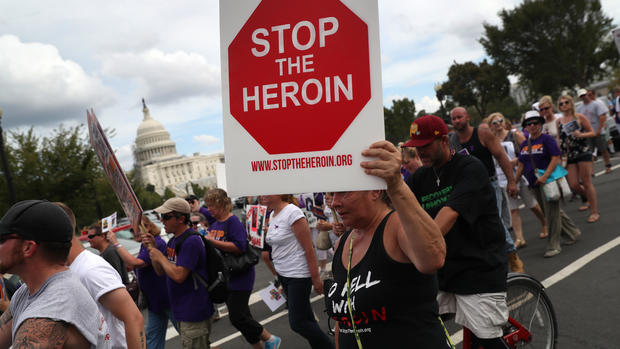Another reason for missing workers: Opioids
The opioid crisis has hit many communities hard, leading to untimely deaths, higher health care spending and personal tragedies.
But the crisis may also be rippling into the economy in complex ways. Goldman Sachs (GS) economist David Mericle said a research note earlier this month that the opioid epidemic "is intertwined with the story of declining prime-age participation, especially for men."
The declining labor force participation rate is something of an economic puzzle because the stronger economy should be convincing more Americans to return to the workforce. Instead, the share of American adults with jobs has dwindled by almost 3 percentage points since the recession ended.
Economists have posited causes ranging from weak demand for less-skilled workers to rising disability rates, but as Mericle points out, the trend has also coincided with the opioid crisis.
"Data on substance abuse treatment episodes also reinforce the narrative: Of admissions of individuals not in the labor force, 58 percent described themselves as being out of the labor force for "other" reasons -- meaning they aren't students, disabled, retired, inmates or homemakers -- and 47 percent of these admissions were for opioids, well above the average rate," he noted in the report.
Some job applicants may fail potential employers' drug tests, which keeps them out of the workforce. In addition, many workers aren't even trying to get a job because they believe they would flunk the drug test.
"Especially in companies that hire drivers, we hear a lot about how the drug tests are a problem there," said Gad Levanon, chief economist for North America of The Conference Board, a business membership group. "Many of [the applicants] don't pass it, so they can't hire them -- and they don't know many aren't even trying."
Working-age adults who have effectively dropped out of workforce because of their opioid habit could provide a missing piece to the puzzle. Failed pre-employment drug tests for job candidates have increased only slightly, according to Mericle, citing data from Quest Diagnostics. But that doesn't count those adults who simply aren't applying for jobs because they know they would flunk.
About 2 million Americans are abusing prescription opioids, representing about one out of three opioid prescriptions, according to a report published last year by health care information company Castlight. Although opioid prescriptions have declined since their peak in 2010, the level is still three times a high as in 1999, the Centers for Disease Control and Prevention said last week.
Baby boomers are more likely than other generations to abuse opioid prescriptions, at a rate of about 7.4 percent, Castlight noted. Only about 2 percent of millennials are opioid abusers.
Aside from age, opioid abuse is more likely in low-income areas, or regions where per capita income is $40,000 or less. Castlight's analysis found that 22 out of the top 25 cities suffering from opioid abuse are in rural areas or the South, such as Wilmington, North Carolina, where the abuse rate is the nation's highest, at 11.6 percent of residents.
The fate of white, middle-age Americans without college degrees has become something of a cottage industry for economists, who increasingly are studying how the world has gotten tougher for this group. A toxic combination of lower wages, fewer opportunities and the aches and pains of aging could be creating a perfect storm for this demographic. Princeton economists Anne Case and Nobel Prize-winner Angus Deaton notably termed the group's spike in mortality rates as "deaths of despair."
The trends don't bode well for the labor force participation rate, Mericle noted. To be sure, it has ticked up since 2015, but the overall rate still remains far below its peak in the late 1990s.
"Use of both legal prescription pain relievers and illegal drugs is part of the story of declining prime-age participation, especially for men," Mericle noted, "and this reinforces our doubts about a rebound in the participation rate."




